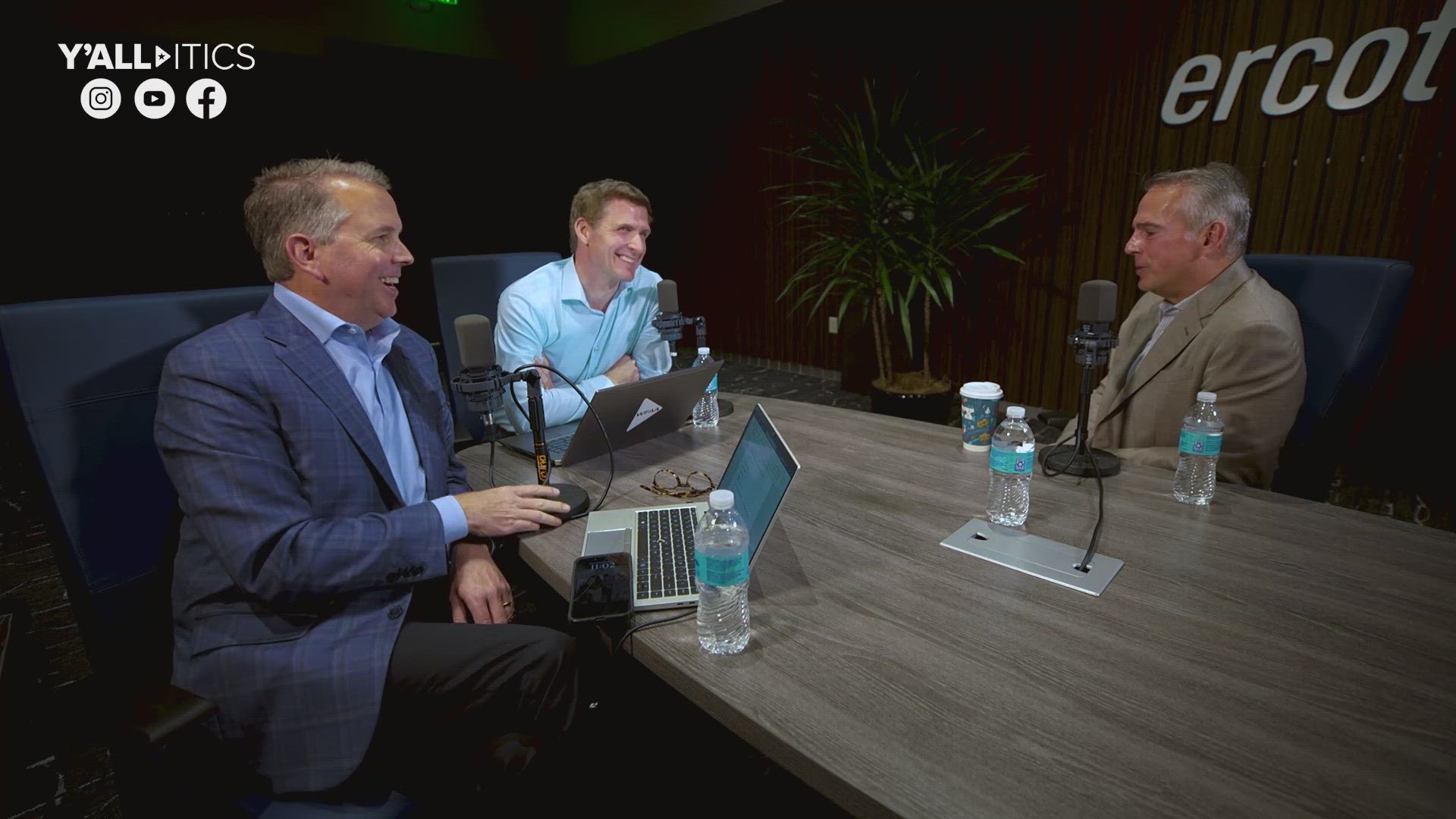AUSTIN, Texas — With winter just around the corner, we wanted to make sure Texas is ready.
So we turned to ERCOT President and CEO Pablo Vegas to get answers.
ERCOT, the Electric Reliability Council of Texas, recently announced it will need 3,000 megawatts in reserve for the winter, so the state is prepared for any emergency. For perspective, one megawatt (MW) of electricity can power around 200 Texas homes during peak demand.
Vegas told us there are two options to provide this “insurance policy.”
The first would be to fire up old, coal-fired power plants and the agency sent letters to recently retired, or “mothballed,” plants that could provide this help.
But that’s easier said than done.
“In reality, it’s probably much less likely that any of them will actually be able to do so because once a plant gets into a shutdown mode, it’s really hard to turn that around and bring it back up and run safely and reliably,” Vegas told us on Y’all-itics.
Vegas says nearly 30% of the state’s thermal generation fleet (burns fossil fuels, such as coal) is over 40 years old, so it’s an aging fleet that’s already being worked hard.
And inside those plants, there are thousands and thousands of moving parts that are also 40 - 50 years old.
So, it’s not hard to see why it would be difficult to bring those back online quickly.
ERCOT’s second option to have extra capacity in reserve just in case, is known as “demand response,” when businesses reduce energy when called upon to do so.
“It could be as simple as a retailer in a city having a bunch of controllable thermostats that people sign up for and get paid in order to allow the company to turn that thermostat up or down in order to manage energy at a peak time for an hour or two or three,” Vegas said. “And so, if we can get 3,000 megawatts of demand response, that would also qualify.”
Winter won’t be stopped, so we asked Vegas directly if Texas will have 3,000 MW in reserve during the cold months.
“We’ll see. That’s a lot of the new demand response to show up and to define in such a short period of time. So, we’re hopeful we get as much as we can, but we probably won’t see a full 3,000 (MW).”
There is one thing we know for sure.
Texans will pay for it.
“All of the load, which is the consumers, the users of energy, they pay for virtually everything in the market. Everything that has a cost eventually flows down to consumers. We don’t know yet what it’s going to cost,” Vegas said.
The Jasons traveled to Austin for this podcast, so there was much to discuss. Listen to the full episode to also learn how much ERCOT paid this year to get big electric users to shut down so the rest of us could avoid rolling outages, and how much electricity Texas will require by the end of the decade. It’s a lot. Vegas also discusses the huge role renewable energy now plays and how wind and solar have changed peak usage hours in our state, the “riskiest” time of day.
More ERCOT coverage from WFAA:

